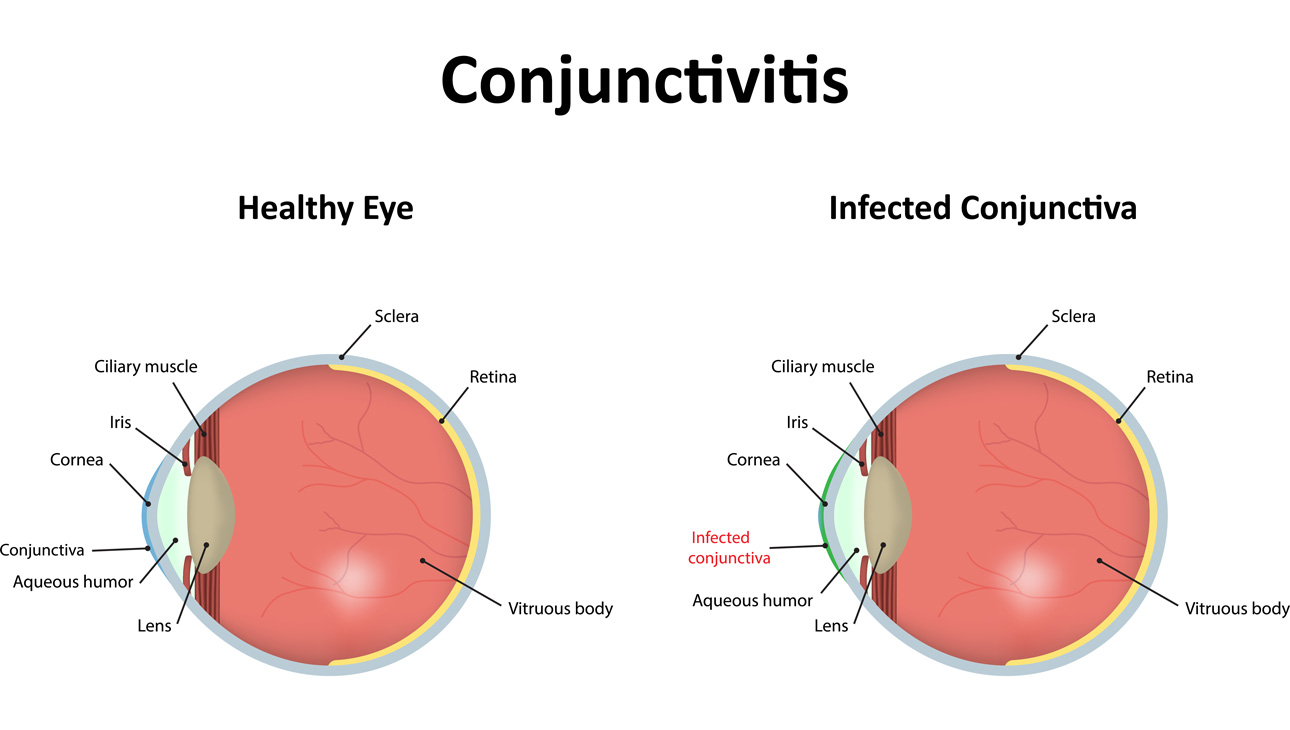
Sometimes known as conjunctivitis, eye infections are the result of bacteria, fungi or viruses that invade the eye. Find out about the causes, symptoms and treatments for eye infections, as well as advice on how to help prevent them.
Infections can affect any part of the eyes, including the eyelids, cornea, conjunctiva, and even the retina in the back of the eye. They can be categorised as bacterial, viral or allergic and can present themselves in many different ways:
While eye infections can typically be managed at home with the appropriate treatment, be sure to seek medical attention if you experience any of the following:
You should also see a healthcare professional if you have conjunctivitis and any other medical condition or illness – for example, HIV infection, cancer treatment etc.
Conjunctivitis can be caused by types of viruses or bacteria. Other causes can be allergic reactions and exposure to irritants.
This type of conjunctivitis is contagious and typically caused by common viruses such as adenovirus (associated with the common cold and bronchitis) and herpesvirus (known for cold sores).
Other symptoms such as a cold, sore throat or infections of the upper respiratory tract can also be present with viral conjunctivitis.
Common in children, bacterial infections can be caused by exposure to contaminated objects or surfaces, contact with an infected person or spread from sinus or ear infections.
The types of bacteria that cause bacterial eye infection include:
Allergic conjunctivitis can be caused by seasonal changes, particularly as a reaction to pollen. If you’re allergic or sensitive to dust mites, moulds or animal dander, it may flare up at any time of the year.
Contact lens wear, smoke, pollutants and chemicals can also cause , as the eye becomes inflamed from allergens or irritants it considers harmful. Taking a break or switching to a different type of lens can help contact lens wearers, while other causes can typically be resolved with over-the counter remedies.

Infective conjunctivitis can be treated with medicinal eye drops containing Chloramphenicol, an antibiotic known for relieving symptoms and clearing up eye infections.
Specific forms of conjunctivitis can be treated in the following ways:
If you’re not sure which type of infection you have, seek advice from a healthcare professional. Always read the label before using a product.
Taking just a few simple steps can help avoid contracting conjunctivitis altogether:
If you have young children, be sure to advise them of how to look after their eyes and practise good hygiene by following these guidelines.
Worried about red eyes? Find out the symptoms, causes and how to treat them.
Don’t let hay fever ruin your day – learn more about the condition and get tips to soothe your eyes.